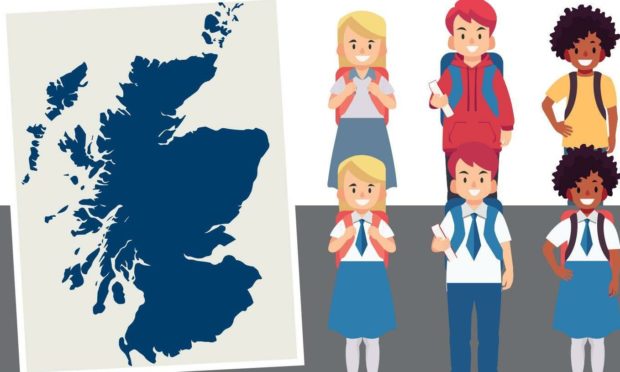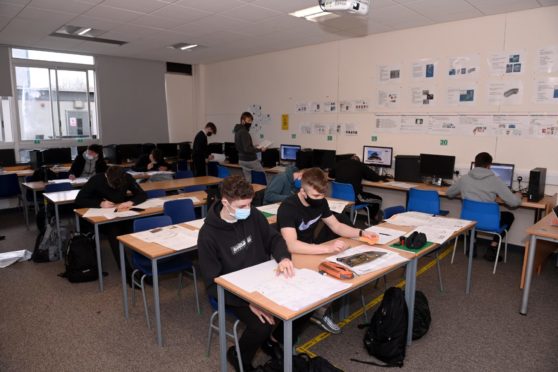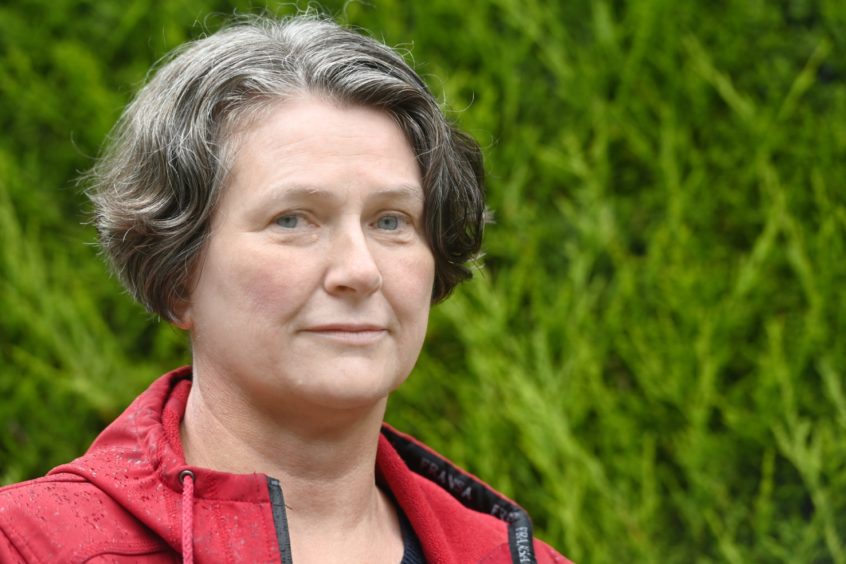From blazers and ties to polo shirts and jumpers, uniforms have been a mainstay in Scottish schools for generations.
But what should schools realistically expect pupils to wear, and how much is acceptable for families to pay to kit out their children?
Earlier this year, a bill to make provision for guidance to schools about the costs of school uniform policies was passed in Westminster.
This means that come September when their new year begins, schools in England will be told that they must keep branded items to a minimum.
Statutory guidance also exists in Wales and is clear that “no school uniform should be so expensive as to leave pupils or their families feeling unable to apply for admission or to attend a particular school.”
No such guidance currently exists in Scotland but as pupils gear up to head back to the classroom after the summer break, is it time to look again at uniform policies in Scotland?
What do schools expect pupils to wear?
Dr Rachel Shanks, a senior lecturer in the school of education at Aberdeen University, has researched school uniform policy in Scotland.
She found that as of 2019, of the 357 publicly funded secondary schools in Scotland, 343 (96%) require a uniform. Just 14 schools did not.
A total of 320 schools mandate the wearing of a school tie by both girls and boys, while 235 schools require a blazer to be worn and 200 ban jeans.
Dr Shanks’ research also found that almost 20% of secondary schools in Scotland specify an exclusive supplier for school uniform.
But what impact could these policies have on the finances of families?
A survey of around 1,000 parents across the UK, carried out by the charity The Children’s Society, found that parents with children in state schools spent on average £337 per year on school uniform for each secondary school child and £315 per year for each primary school child.
The requirement to purchase branded items from official suppliers has also been found to place an added financial burden on parents and carers.
How would statutory guidance help?
Dr Shanks’ research made a series of recommendations to the Scottish Government, including statutory guidance on school uniform policies to be developed with affordability as the top priority.
The research also recommended that the statutory guidance requires regular reviews of exclusive supply arrangements of school uniform items in order to reduce the cost of the school uniform.
Dr Shanks is also keen on involving young people in the process of setting a uniform policy in schools, and argued that the often traditional attire, including blazers and ties, may not have a place in the modern day.
She said: “In my briefing to MSPs and the Scottish Government, I suggested that if there was national guidance saying to schools you need to review this regularly, it would be a perfect opportunity to involve pupils.
“What should they be wearing? In more and more jobs, men don’t have to wear a shirt and tie and yet that is sort of what a school uniform is like.
“Then if we think about girls and young women, there are very few jobs where they would have to wear a tie. It’s hard to think of one.
“It would be great to involve young people in the decision making around what they are wearing during the school day.”
Help is available and what does the Scottish Government say?
Last month the Scottish Government announced that the national school clothing grant had been raised to a minimum of £120 per eligible primary school pupil and £150 per eligible secondary school pupil.
It was previously a minimum of £100.
The Scottish Government confirmed guidance is to be brought forward aiming to reduce costs.
A spokesperson said: “We know that uniform can be one of the most significant school costs for families and are committed to overcoming barriers to accessing education.
“We have already, in partnership with local authorities, delivered on our commitment to increase the level of school clothing grant in Scotland, increasing this vital support to at least £120 for primary school pupils and £150 for secondary school pupils in time for the start of the new school year.
“We will also bring forward guidance on school uniform policy with a view to ending expensive insistence on exclusive suppliers, to support our aim of reducing costs.”
More from the Schools and Family team
Councils issue pupils with thousands of laptops since Covid outbreak began
Free school meals expansion ‘removes shame and stigma’
Education secretary sidesteps Oban tights row – but pledges national uniform guidance












